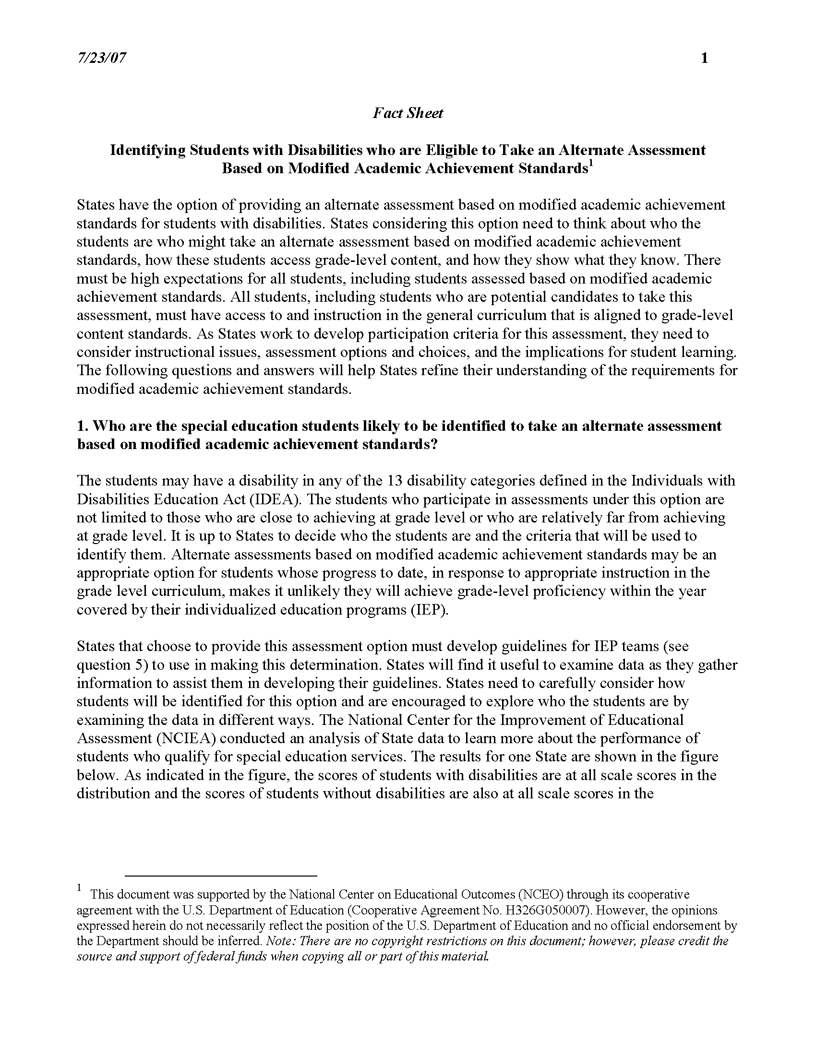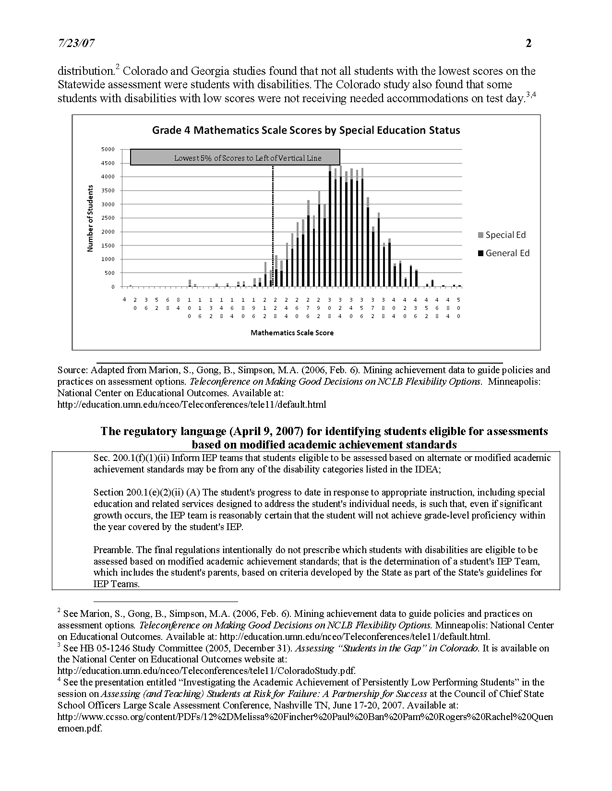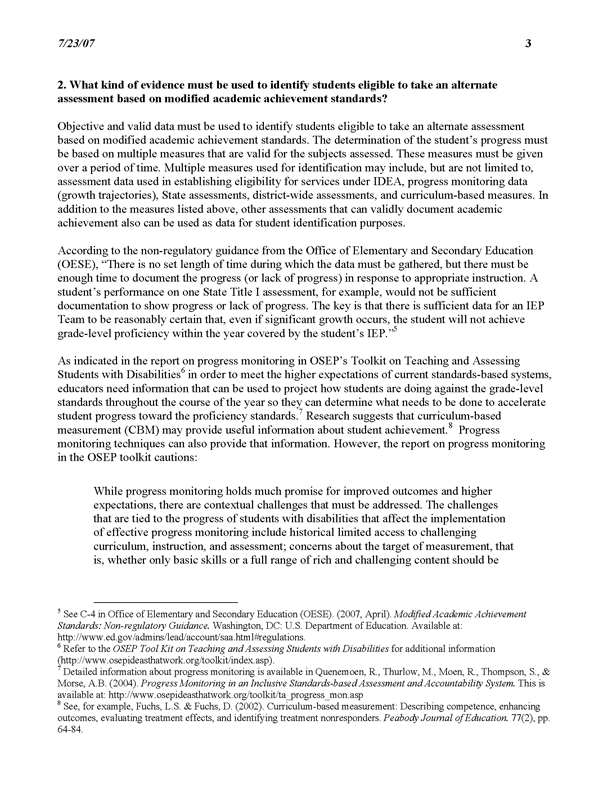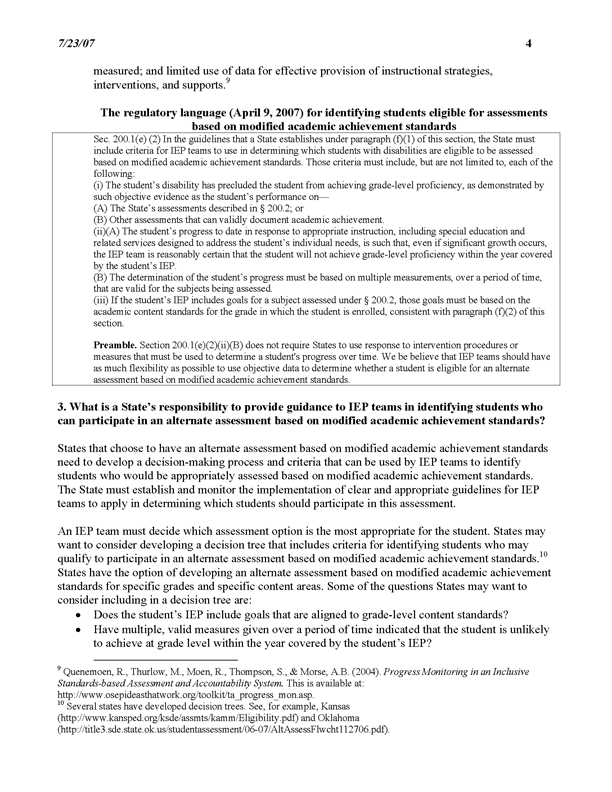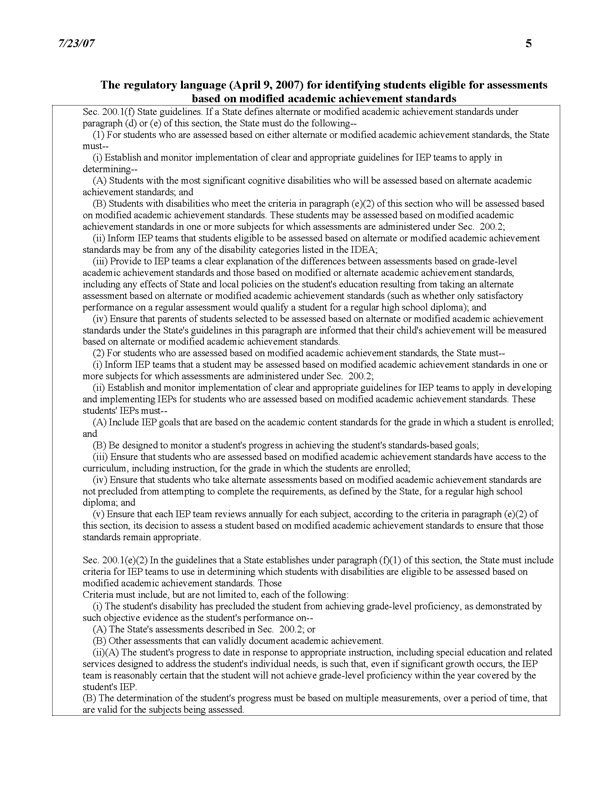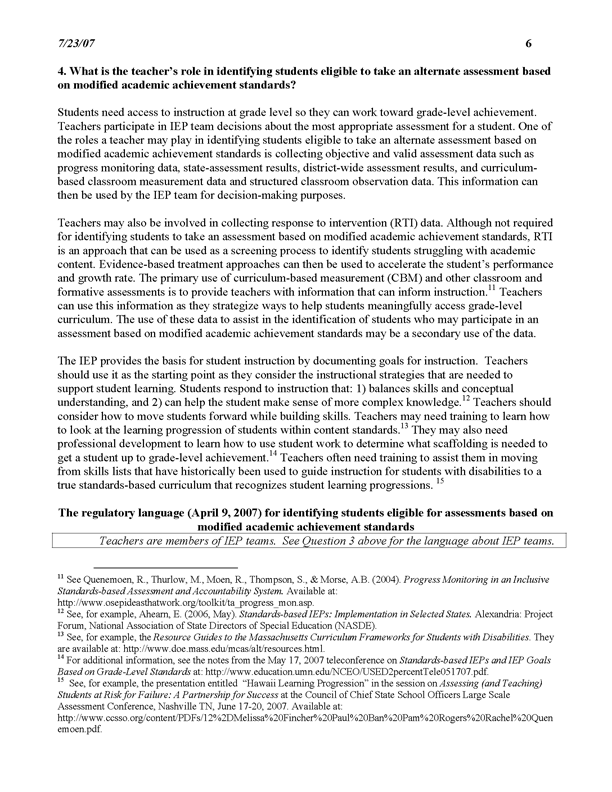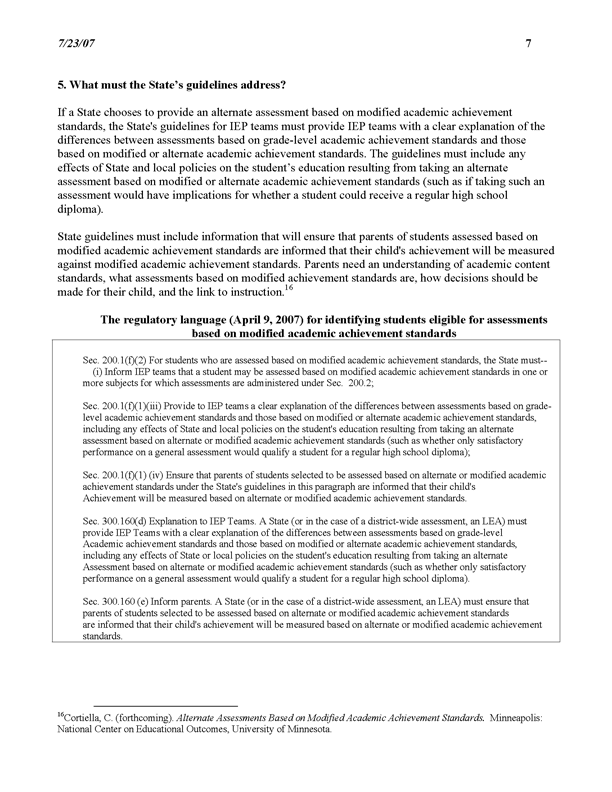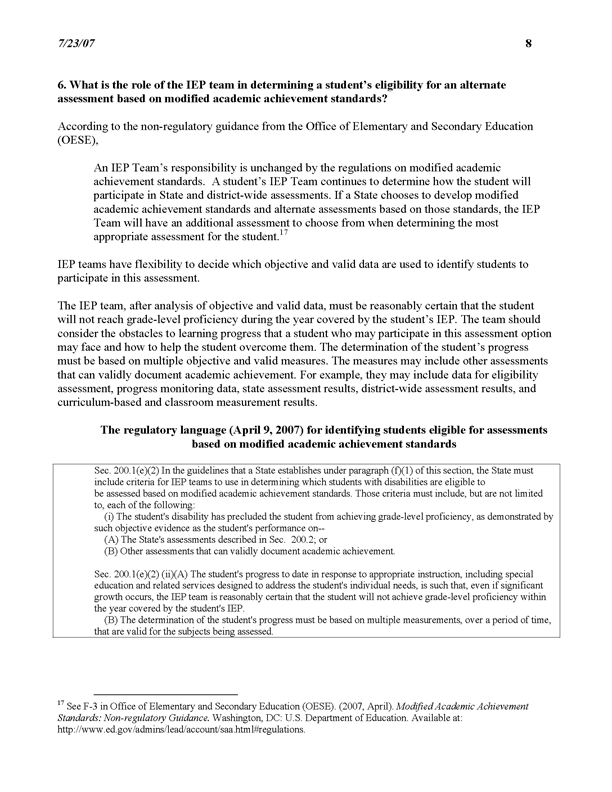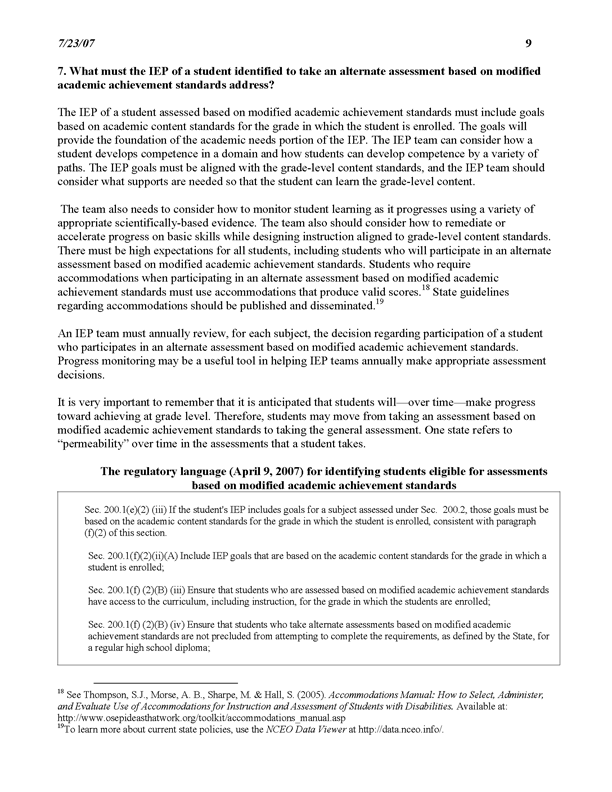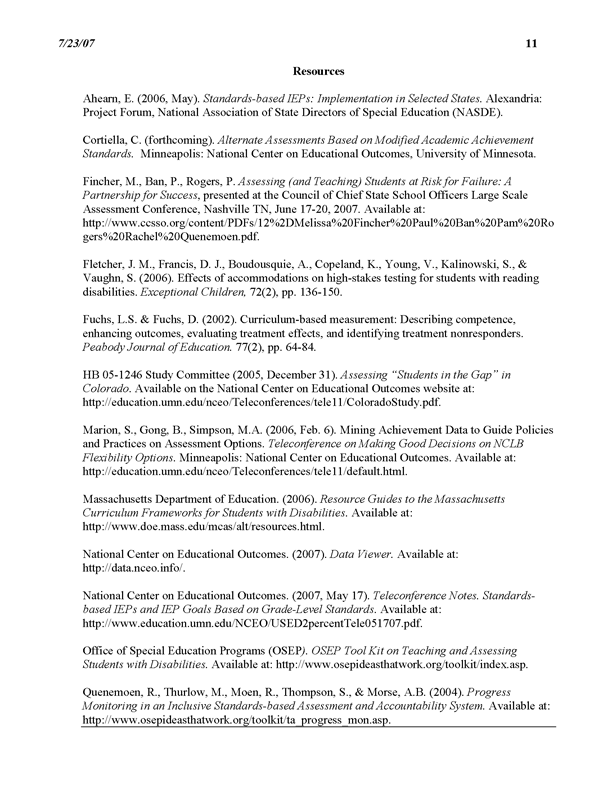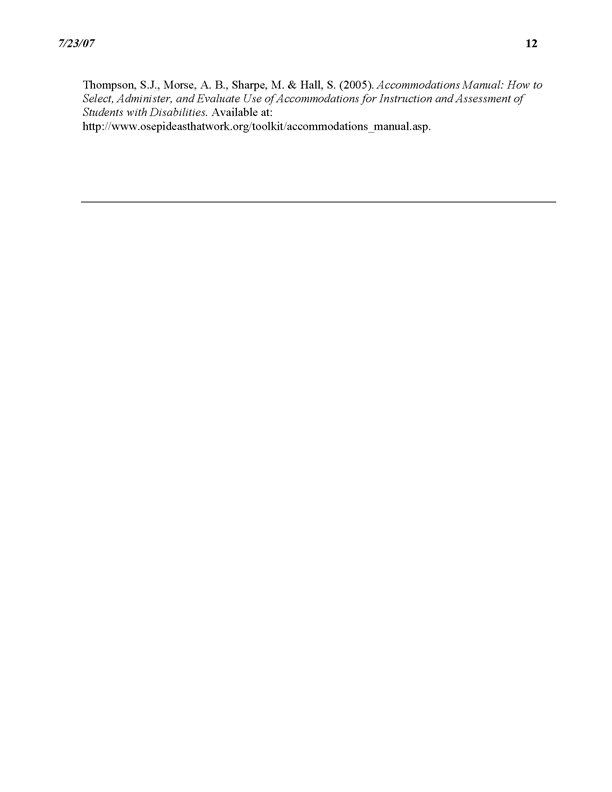Thinking About the Students Who May Qualify to Participate in An Alternate Assessment Based on Modified Academic Achievement Standards (AA-MAS): A Tool for Study Groups Sandra Berndt &
Barbara Ebben December 2008 All rights reserved. Any or all portions of this document may be reproduced and distributed without prior permission, provided the source is cited as: Berndt, S. & Ebben, B. (2008). Thinking about the students who may qualify to participate in an alternate assessment based on modified academic achievement standards (AA-MAS): A tool for study groups. Minneapolis, MN: University of Minnesota, National Center on Educational Outcomes. Sheryl Lazarus, National Center on Educational Outcomes, assisted in writing and preparing this publication. Background Information The Alternate Assessment based on Modified Academic Achievement Standards (AA-MAS) was officially introduced to states on April 9, 2007 through a regulation to both the No Child Left Behind Act and the Individuals with Disabilities Education Act. That regulation provided an option for another alternate assessment that states may pursue, in addition to the alternate assessment based on grade-level achievement standards (AA-GLAS), and the alternate assessment based on alternate academic achievement standards (AA-AAS). This new alternate assessment option, perhaps more than the others, is one that should prompt states to think about who the students are who might take the assessment. Included in the considerations about who the students are might be questions about how the students gain access to grade-level content standards and how they show what they know and are able to do. This publication describes an activity used by the Wisconsin Department of Public Instruction to learn more about the characteristics of students who may qualify to participate in an alternate assessment based on modified academic achievement standards (AA-MAS). Wisconsin is a member of the Multi-state GSEG Consortium Toward a Defensible AA-MAS. The Wisconsin Department of Public Instruction team (Sandra Berndt, Barb Ebben, Brian Johnson, Eva Kubinski, Carol Schweitzer, and Suzan VanBeaver) for the Multi-state GSEG organized a study group of 15 educators, including general educators, special educators, a principal, an institution of higher education representative, a special education director, program support teachers, and parents. These educators met to explore the possible characteristics of the students that potentially make up the student population that might participate in AA-MAS. This publication describes the activities that Wisconsin used. This tool may be adapted for use by other states. The activities described in this publication helped the educators in the study group develop a better understanding of the students who might participate in an AA-MAS. The participants refined their initially broad perspectives of the population of students into more specific and detailed answers supported by legal regulations. Many of the study group participants found that they initially were considering a much larger population than the regulations appear to indicate. They also realized the importance of ensuring access to grade-level, content-based instruction for this group of students before considering the development of an AA-MAS. Description of the Process and Activities Purpose This tool is designed to be used during a study group or stakeholder meeting to learn more about the characteristics of students who may qualify to participate in an alternate assessment based on modified academic achievement standards (AA-MAS). Participant Outcomes Participants will:
Time Frame 4 hours (consider holding an all day meeting with two hours before lunch and two hours after lunch). Materials Needed
Before You Begin
Before the Study Group Meeting Identify and invite study group members. Groups of 15-20 people work well for this activity. Consider including general educators, special educators, a principal, an institution of higher education representative, a special education director, program support teachers, and parents in the group. Directions 1. Welcome participants. 2. Present background information about alternate assessment based on modified academic achievement standards (AA-MAS) both at the state and national levels. The presentation should be relatively brief and at a basic level (see NCEO Web site at www.nceo.info for information about AA-MAS). Do not distribute the Fact Sheet. (It will be distributed later—see Activity 2 listed under number 6.) 3. Activity 1: Thoughts and ideas about the students who might qualify for AA-MAS a. Place the questions below on wall posters around the room. The questions are designed to help the meeting participants think about the group of students who may qualify to participate in AA-MAS. Also, provide each participant with the handout that contains the following questions (see Appendix A for template): - Who are the special education students likely to be identified to take an AA-MAS? - What kind of evidence must be used to identify students eligible to take an AA-MAS? - What is the teacher’s role in identifying students eligible to take an AA-MAS? - What must the IEP of a student identified to take an AA-MAS address? b. Ask the large group to discuss and brainstorm each question. A recorder lists possible answers for each question on the wall posters. c. Bring closure to Activity 1 by summarizing what the group has been discussing. 4. Take a break. (If appropriate, break for lunch). 5. Bring the group back together. 6. Activity 2. Who are the students who might qualify for AA-MAS? a. Give each meeting participant a copy of Identifying Students with Disabilities who are Eligible to Take an Alternate Assessment Based on Modified Academic Achievement Standards. Provide a few minutes for participants to read the Fact Sheet. b. Break participants into teams of 3-4 participants. Each group should also have a note taker (with a laptop computer, if available) to record the discussion. Ask each group to compare its previous answers with those explained in the regulatory language in the Fact Sheet. (The questions used in the previous activity are the same as questions 1, 2, 4, and 7 on the Fact Sheet.) c. Bring participants back together into the large group and ask each small group to summarize its discussion. A recorder lists important points on wall posters. d. Discussion question: · What have you learned about the group of students who may qualify to participate in AA-MAS? · Did anything surprise you? 7. Bring closure to session by asking participants for ideas about how to improve instruction and assessment for this group of students. Thinking About the Students Who May Qualify to Participate in An Alternate Assessment Based on Modified Academic Achievement Standards (AA-MAS)
Reprint of Identifying
Students with Disabilities who are
Eligible to Take National Center on Educational Outcomes (NCEO) July 23, 2007 This publication is also available as a PDF file.
|

